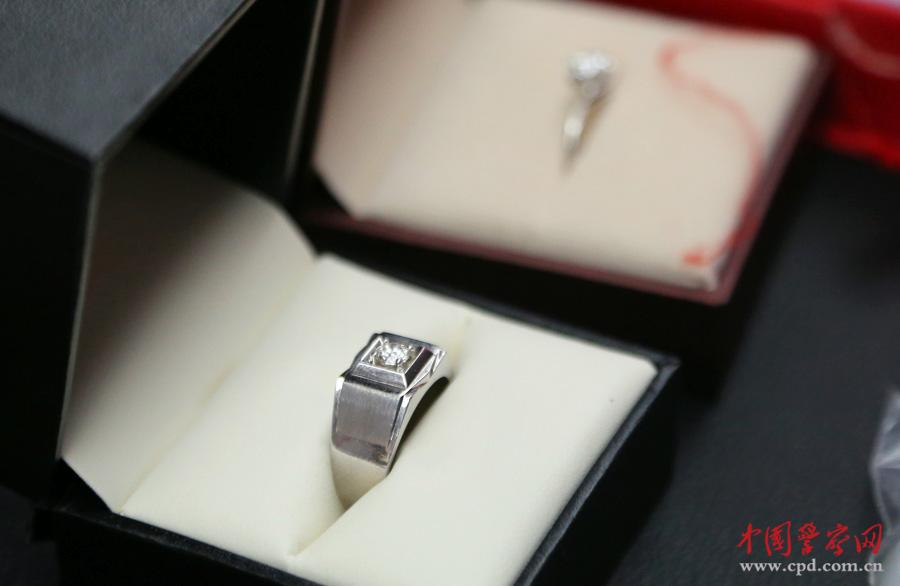
1. Enter "dxdiag" in the run. If a pop-upThe DirectX diagnostic tool dialog box prompts us whether we want to check. Click OK.
2. Check memory: 64-bit operating systems usually require a higher memory capacity to run, and it is recommended that you have at least 4GB of memory.
3. First, select "Computer" and right-click "Properties". You can see the digits of the computer operating system. You can also click "Start", enter "cmd" in the input box, and click "cmd application". Enter "systeminfo" in the cmd interface and press Enter. The digits of the operating system can be seen here.
4. Find the "Installed Memory (RAM)" column in the system information. If the memory capacity exceeds 4GB, the 64-bit operating system can be installed. Check hardware compatibility: Some older models of devices may not support 64-bit operating systems.
1. Right-click "Properties" on the desktop and a window titled "System Properties" pops up. Record whether your system is 32-bit or 64-bit information under the "General" tab. If your system is 64-bit, it will be clearly marked as "x64 Edition", otherwise your system will be 32-bit.
2. Step 1: Right-click "Properties" in "My Computer" on the desktop. Step 2: A window titled "System Properties" pops up, and record the information of whether your system is 32-bit or 64-bit under the "General" tab.
3. If you want to know whether your computer is a 32-bit system or a 64-bit system, you only need to check the system information. The steps are as follows: find "My Computer" on the desktop and click to select it. Right-click, select and click "Properties" in the pop-up menu.
4. Right-click "Properties" in "My Computer" on the desktop; a window with the title "System Properties" pops up, and record the information of whether your system is 32-bit or 64-bit under the "General" tab.
1, First, right-click "My Computer" and select "Properties". Open the system properties box, and then select "General". If it is not clearly marked with x64, it means that the computer is 32-bit. Method 2: Click "Start" and then select "Run". Enter "winmsd.exe" in the window and click OK.
2. Method 1: Start-Run Command Enter the sysdm.cpl or winmsd.exe command in the command box to view the system information. If possible, it will pop up in the system properties box.
3. Right-click "My Computer", "Properties" and "Device Manager" to see how many are under the "Processor" tab. If there are two, it is dual-core, and more than one is multi-core, such as 4-core, 8-core, so as long as it is dual-core and dual-core or above, it is a 64-bit operating system.
4. Check the computer configuration by entering the "dxdiag" command in the run; the specific steps are as follows: enter "dxdiag" in the run. If a DirectX diagnostic tool dialog box pops up, prompting us whether we want to check, click OK.
5. Check how many bit systems your computer is currently using. Take Windows 7 as an example. Right-click on the computer - Properties to view. In addition, a software is recommended, a green single file, which can clearly indicate the operating system digits of the current system.As shown in the figure, the software is divided into three parts, that is, the current system bits.
International trade law reference data-APP, download it now, new users will receive a novice gift pack.
1. Enter "dxdiag" in the run. If a pop-upThe DirectX diagnostic tool dialog box prompts us whether we want to check. Click OK.
2. Check memory: 64-bit operating systems usually require a higher memory capacity to run, and it is recommended that you have at least 4GB of memory.
3. First, select "Computer" and right-click "Properties". You can see the digits of the computer operating system. You can also click "Start", enter "cmd" in the input box, and click "cmd application". Enter "systeminfo" in the cmd interface and press Enter. The digits of the operating system can be seen here.
4. Find the "Installed Memory (RAM)" column in the system information. If the memory capacity exceeds 4GB, the 64-bit operating system can be installed. Check hardware compatibility: Some older models of devices may not support 64-bit operating systems.
1. Right-click "Properties" on the desktop and a window titled "System Properties" pops up. Record whether your system is 32-bit or 64-bit information under the "General" tab. If your system is 64-bit, it will be clearly marked as "x64 Edition", otherwise your system will be 32-bit.
2. Step 1: Right-click "Properties" in "My Computer" on the desktop. Step 2: A window titled "System Properties" pops up, and record the information of whether your system is 32-bit or 64-bit under the "General" tab.
3. If you want to know whether your computer is a 32-bit system or a 64-bit system, you only need to check the system information. The steps are as follows: find "My Computer" on the desktop and click to select it. Right-click, select and click "Properties" in the pop-up menu.
4. Right-click "Properties" in "My Computer" on the desktop; a window with the title "System Properties" pops up, and record the information of whether your system is 32-bit or 64-bit under the "General" tab.
1, First, right-click "My Computer" and select "Properties". Open the system properties box, and then select "General". If it is not clearly marked with x64, it means that the computer is 32-bit. Method 2: Click "Start" and then select "Run". Enter "winmsd.exe" in the window and click OK.
2. Method 1: Start-Run Command Enter the sysdm.cpl or winmsd.exe command in the command box to view the system information. If possible, it will pop up in the system properties box.
3. Right-click "My Computer", "Properties" and "Device Manager" to see how many are under the "Processor" tab. If there are two, it is dual-core, and more than one is multi-core, such as 4-core, 8-core, so as long as it is dual-core and dual-core or above, it is a 64-bit operating system.
4. Check the computer configuration by entering the "dxdiag" command in the run; the specific steps are as follows: enter "dxdiag" in the run. If a DirectX diagnostic tool dialog box pops up, prompting us whether we want to check, click OK.
5. Check how many bit systems your computer is currently using. Take Windows 7 as an example. Right-click on the computer - Properties to view. In addition, a software is recommended, a green single file, which can clearly indicate the operating system digits of the current system.As shown in the figure, the software is divided into three parts, that is, the current system bits.
Meat and poultry HS code references
author: 2024-12-23 22:27How to align trade data with demand planning
author: 2024-12-23 21:53Export licenses tied to HS codes
author: 2024-12-23 21:46Sustainable supply chain analytics
author: 2024-12-23 21:25Enhanced shipment documentation verification
author: 2024-12-23 23:22HS code strategies for trade diversification
author: 2024-12-23 22:59Global trade agreement analysis
author: 2024-12-23 21:57 HS code-driven landed cost estimation
HS code-driven landed cost estimation
316.16MB
Check Global trade resource libraries
Global trade resource libraries
487.77MB
Check HS code electrical machinery data
HS code electrical machinery data
486.91MB
Check Wool and yarn HS code verification
Wool and yarn HS code verification
613.92MB
Check Mineral fuels HS code data analysis
Mineral fuels HS code data analysis
513.15MB
Check How to manage complex customs laws
How to manage complex customs laws
736.41MB
Check Exotic textiles HS code classification
Exotic textiles HS code classification
617.67MB
Check Real-time shipment inspection data
Real-time shipment inspection data
328.32MB
Check Engine parts HS code verification
Engine parts HS code verification
328.84MB
Check Industry-specific tariff code reference
Industry-specific tariff code reference
599.97MB
Check How to identify export-ready products
How to identify export-ready products
624.28MB
Check HS code utilization in digital trade documents
HS code utilization in digital trade documents
785.65MB
Check High-value electronics HS code checks
High-value electronics HS code checks
644.49MB
Check Export licenses tied to HS codes
Export licenses tied to HS codes
424.19MB
Check international trade insights
international trade insights
684.97MB
Check Top trade research databases
Top trade research databases
638.61MB
Check Trade compliance automation tools
Trade compliance automation tools
126.23MB
Check HS code-based opportunity scanning
HS code-based opportunity scanning
427.31MB
Check Sourcing intelligence from customs data
Sourcing intelligence from customs data
544.39MB
Check USA trade data analysis
USA trade data analysis
384.69MB
Check HS code-driven logistics partner selection
HS code-driven logistics partner selection
977.41MB
Check HS code verification for exporters
HS code verification for exporters
298.89MB
Check How to forecast seasonal import demands
How to forecast seasonal import demands
866.75MB
Check Dynamic import export data modeling
Dynamic import export data modeling
839.81MB
Check How to refine supply chain visibility
How to refine supply chain visibility
267.85MB
Check How to analyze global export trends
How to analyze global export trends
123.81MB
Check How to monitor competitor supply chains
How to monitor competitor supply chains
482.69MB
Check HS code for artisanal goods
HS code for artisanal goods
493.65MB
Check How to optimize shipping schedules
How to optimize shipping schedules
329.37MB
Check End-to-end supplier lifecycle management
End-to-end supplier lifecycle management
927.19MB
Check Sourcing opportunities filtered by HS code
Sourcing opportunities filtered by HS code
932.34MB
Check HS code mapping to trade agreements
HS code mapping to trade agreements
615.65MB
Check HS code-driven environmental compliance
HS code-driven environmental compliance
951.87MB
Check HS code-based scenario planning for exports
HS code-based scenario planning for exports
277.18MB
Check HS code-driven supplier performance metrics
HS code-driven supplier performance metrics
684.23MB
Check Industry-specific trade data filters
Industry-specific trade data filters
314.27MB
Check
Scan to install
International trade law reference data to discover more
Netizen comments More
646 Global trade data interoperability
2024-12-23 23:25 recommend
2314 Packaging industry HS code references
2024-12-23 22:58 recommend
1564 How to use trade data for market expansion
2024-12-23 22:49 recommend
1334 How to simplify HS code selection
2024-12-23 22:02 recommend
523 International procurement intelligence
2024-12-23 21:16 recommend